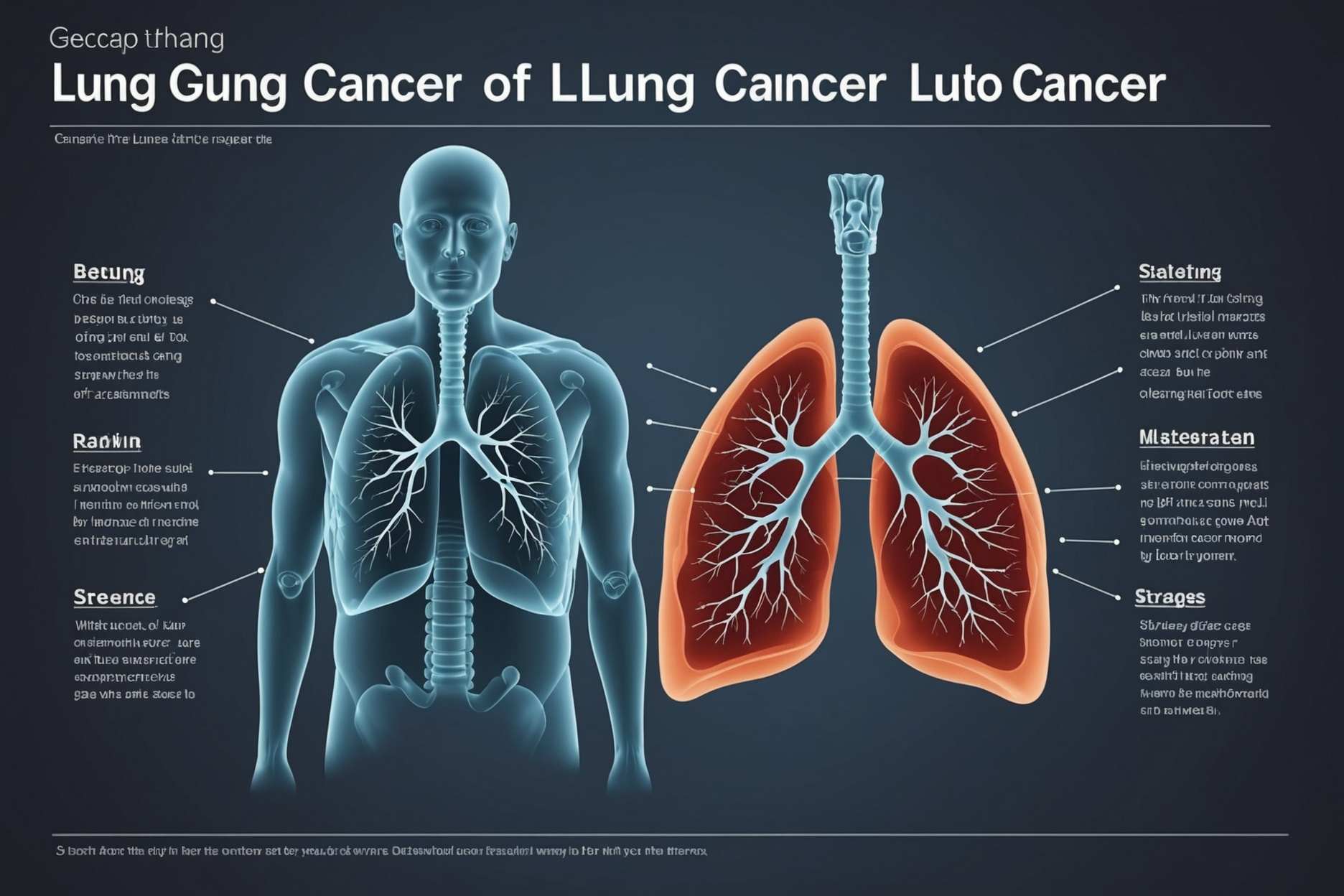Instructions to Figure out the Various Phases of Cellular breakdown in the lungs

Disease organizing offers a normalized technique to evaluate the size of a cancer and the level of its spread. For cellular breakdown in the lungs, fathoming these stages furnishes the two patients and medical care suppliers with an unmistakable system for therapy choices and guess. We should investigate the ramifications of each stage for cellular breakdown in the lungs.
**Stage 0 (Carcinoma in Situ):**
At this underlying stage, unusual cells are available however confined, meaning they have not yet attacked encompassing lung tissues or metastasized to different region of the body.
**Understanding Carcinoma in Situ:** This stage addresses the earliest type of malignant growth, with not all cases advancing to obtrusive disease. Continuous checking is significant for early location of any likely progression.
**Treatment Options:** Careful expulsion of the strange cells is normally the essential treatment, with laser or photodynamic treatment thought about in certain occurrences.
**Stage I:**
At this stage, the disease stays bound to the lungs and has started intrusive development without influencing the lymph hubs. This stage is additionally sorted in light of growth size and area:
- **Stage IA:** The cancer compares 3 cm.
- **Stage IB:** The cancer surpasses 3 cm however is under 4 cm and may include the primary bronchus or the lung's deepest layers.
**Treatment Implications:** Medical procedure is in many cases the essential strategy, with chemotherapy suggested if vital.
**Stage II:**
The disease has expanded in size or has spread to local designs or lymph hubs.
- **Stage IIA:** The growth is between 4 cm and 5 cm and may have spread to local lymph hubs.
- **Stage IIB:** The growth is bigger and may include bits of the lung's external surface, stomach, or related lymph hubs.
**Therapy Choices:** Careful mediation stays focal, with potential adjuvant treatments like chemotherapy or radiation in view of cancer qualities.
**Stage III:**
This stage shows huge spread inside the lungs and potentially to encompassing tissues.
- **Stage IIIA:** The cancer has reached out to lymph hubs in the chest, remembering those for the contrary side or over the collarbone.
- **Stage IIIB:** The disease has attacked basic designs like the heart, windpipe, or throat.
- **Stage IIIC:** The illness influences various imperative regions and lymph hubs.
**Therapy Strategies:** A mix of a medical procedure, chemotherapy, and radiation is normally utilized, with designated treatments thought about in view of the cancer's hereditary profile.
**Stage IV:**
In this cutting-edge stage, disease has widely metastasized, possibly influencing far off organs.
**Understanding Metastasis:** At this stage, cellular breakdown in the lungs cells might be available in bones, liver, or even the mind. The focal point of treatment shifts from healing to palliative, pointed toward working on personal satisfaction and lightening side effects.
**Treatment Options:** Vital to this stage are chemotherapy, designated treatments, immunotherapies, and palliative consideration. The methodology is focused on overseeing sickness side effects and guaranteeing patient solace.
Explaining the phases of cellular breakdown in the lungs lays out a central design that illuminates treatment choices and visualization conversations. As patients progress through these stages, therapy plans become more customized, taking into account disease movement as well as individual wellbeing, age, and patient inclinations.
**Stage 0 (Carcinoma in Situ):**
At this underlying stage, unusual cells are available however confined, meaning they have not yet attacked encompassing lung tissues or metastasized to different region of the body.
**Understanding Carcinoma in Situ:** This stage addresses the earliest type of malignant growth, with not all cases advancing to obtrusive disease. Continuous checking is significant for early location of any likely progression.
**Treatment Options:** Careful expulsion of the strange cells is normally the essential treatment, with laser or photodynamic treatment thought about in certain occurrences.
**Stage I:**
At this stage, the disease stays bound to the lungs and has started intrusive development without influencing the lymph hubs. This stage is additionally sorted in light of growth size and area:
- **Stage IA:** The cancer compares 3 cm.
- **Stage IB:** The cancer surpasses 3 cm however is under 4 cm and may include the primary bronchus or the lung's deepest layers.
**Treatment Implications:** Medical procedure is in many cases the essential strategy, with chemotherapy suggested if vital.
**Stage II:**
The disease has expanded in size or has spread to local designs or lymph hubs.
- **Stage IIA:** The growth is between 4 cm and 5 cm and may have spread to local lymph hubs.
- **Stage IIB:** The growth is bigger and may include bits of the lung's external surface, stomach, or related lymph hubs.
**Therapy Choices:** Careful mediation stays focal, with potential adjuvant treatments like chemotherapy or radiation in view of cancer qualities.
**Stage III:**
This stage shows huge spread inside the lungs and potentially to encompassing tissues.
- **Stage IIIA:** The cancer has reached out to lymph hubs in the chest, remembering those for the contrary side or over the collarbone.
- **Stage IIIB:** The disease has attacked basic designs like the heart, windpipe, or throat.
- **Stage IIIC:** The illness influences various imperative regions and lymph hubs.
**Therapy Strategies:** A mix of a medical procedure, chemotherapy, and radiation is normally utilized, with designated treatments thought about in view of the cancer's hereditary profile.
**Stage IV:**
In this cutting-edge stage, disease has widely metastasized, possibly influencing far off organs.
**Understanding Metastasis:** At this stage, cellular breakdown in the lungs cells might be available in bones, liver, or even the mind. The focal point of treatment shifts from healing to palliative, pointed toward working on personal satisfaction and lightening side effects.
**Treatment Options:** Vital to this stage are chemotherapy, designated treatments, immunotherapies, and palliative consideration. The methodology is focused on overseeing sickness side effects and guaranteeing patient solace.
Explaining the phases of cellular breakdown in the lungs lays out a central design that illuminates treatment choices and visualization conversations. As patients progress through these stages, therapy plans become more customized, taking into account disease movement as well as individual wellbeing, age, and patient inclinations.
latest_posts
- 1
 Robyn returns to music with 'Dopamine,' her 1st single in 7 years: 'Came to save music once again'
Robyn returns to music with 'Dopamine,' her 1st single in 7 years: 'Came to save music once again' - 2
 6 Well known Nissan Vehicles in the U.S.
6 Well known Nissan Vehicles in the U.S. - 3
 A mom's 'snack strike' has parents asking: Do kids need snacks?
A mom's 'snack strike' has parents asking: Do kids need snacks? - 4
 【阪神】近本光司が10時間交渉の末に5年総額25億円で残留「自分の決断、思いを本当に悩んだ」FA行使せず(スポーツ報知)
【阪神】近本光司が10時間交渉の末に5年総額25億円で残留「自分の決断、思いを本当に悩んだ」FA行使せず(スポーツ報知) - 5
 Figure out how to Detect the Best Rooftop Substitution Choices
Figure out how to Detect the Best Rooftop Substitution Choices
share_this_article
 辻希美、第5子出産後3か月で公の場 長女・希空からの手紙に感涙「つけまつげ取れちゃう」(ENCOUNT)
辻希美、第5子出産後3か月で公の場 長女・希空からの手紙に感涙「つけまつげ取れちゃう」(ENCOUNT) Pick Your #1 breakfast food
Pick Your #1 breakfast food Survey: Protected And Versatile Men's Razor
Survey: Protected And Versatile Men's Razor Which European palace do you fantasy about visiting? Vote!
Which European palace do you fantasy about visiting? Vote! 西武、今井達也のMLB挑戦を容認 高橋光成に続き2人目…本部長「強い意志を受け止めた」(Full-Count)
西武、今井達也のMLB挑戦を容認 高橋光成に続き2人目…本部長「強い意志を受け止めた」(Full-Count) vote in favor of Your #1 kind of climate
vote in favor of Your #1 kind of climate 健康診断で歯周病の検査を…厚労省が実施企業を支援へ(読売新聞オンライン)
健康診断で歯周病の検査を…厚労省が実施企業を支援へ(読売新聞オンライン) 混雑の福岡空港発着数、1時間に5回増検討を国に要請 検討委初会合(朝日新聞)
混雑の福岡空港発着数、1時間に5回増検討を国に要請 検討委初会合(朝日新聞) 2023's Best 10 Cell phone Advancements You Can't Miss
2023's Best 10 Cell phone Advancements You Can't Miss













